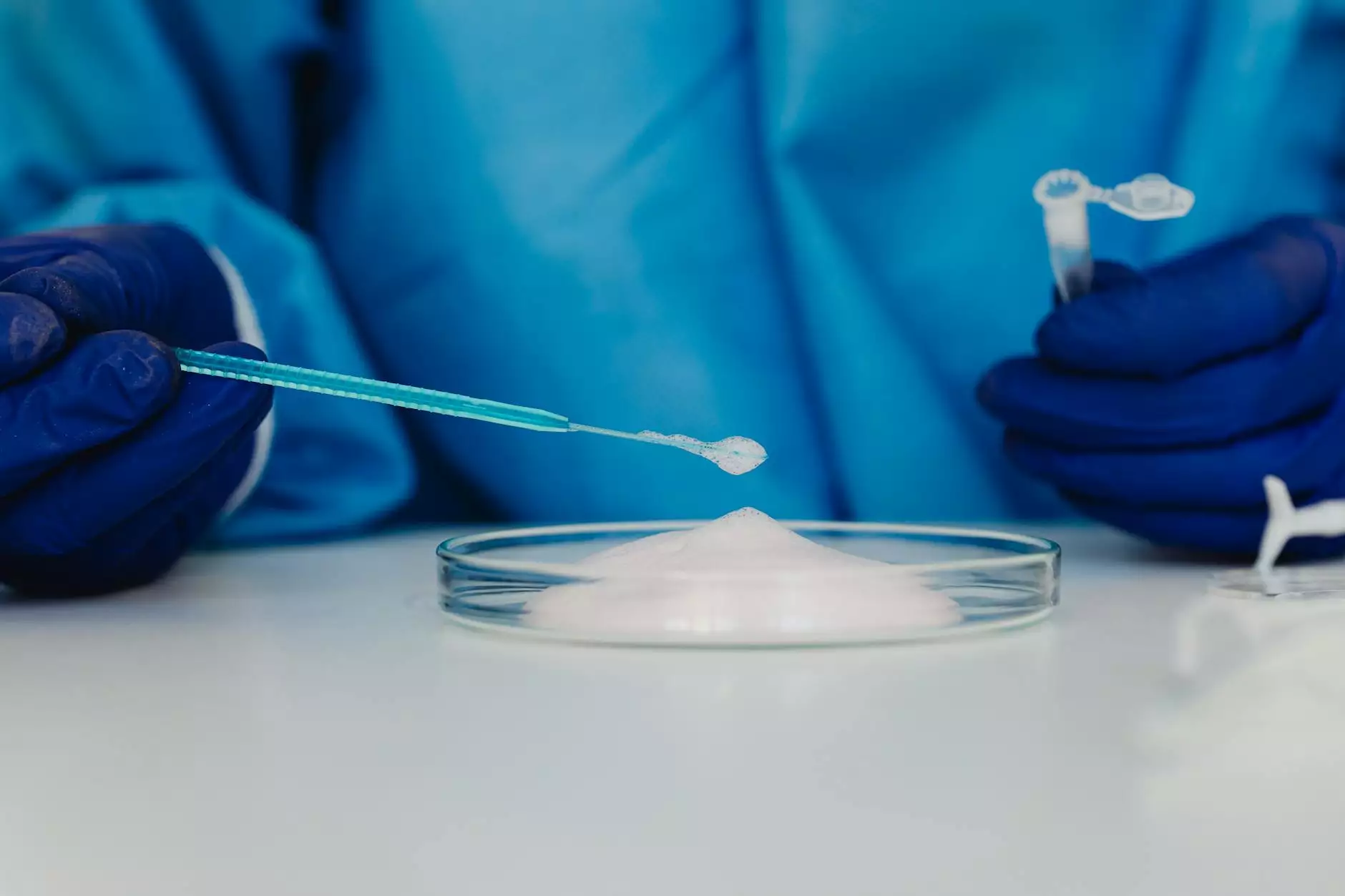Understanding Western Blot Apparatus: A Comprehensive Guide

Western Blot apparatus is an essential tool in the field of molecular biology and biochemistry. It facilitates the detection and analysis of specific proteins from complex mixtures. In this article, we will delve deep into the intricacies of Western Blotting, the components of the apparatus, its applications, and tips for optimizing results to ensure your experiments yield the best possible data.
What is Western Blotting?
Western blotting, also known as immunoblotting, is a technique used for detecting specific proteins in a sample. This method combines gel electrophoresis with the transfer of proteins onto a membrane, followed by incubation with antibodies that specifically bind to the target protein. The end result allows researchers to visualize the protein of interest, providing insights into its expression and function within biological systems.
The Components of Western Blot Apparatus
The Western Blot apparatus is comprised of several key components, each playing a vital role in the overall process. Let's break down these components:
- Gel Electrophoresis Unit: This unit is used to separate proteins based on their molecular weight. The gel is typically made of polyacrylamide and acts as a sieve for proteins.
- Transfer Apparatus: After electrophoresis, proteins are transferred from the gel to a membrane (commonly PVDF or nitrocellulose). The transfer apparatus applies an electric field to facilitate this movement.
- Membrane: This is where the proteins are captured after transfer. The membrane must have high binding capacity for proteins to ensure successful detection later.
- Blocking Buffer: To minimize non-specific binding of antibodies, a blocking solution is applied to the membrane after protein transfer.
- Primary Antibody: This antibody specifically binds to the target protein, allowing for its identification.
- Secondary Antibody: This antibody, which recognizes the primary antibody, is usually conjugated with an enzyme or a fluorophore to enable detection.
- Detection System: Various methods such as chemiluminescence or fluorescence are used to visualize the protein-antibody complexes on the membrane.
Principle of Western Blotting
The principle of Western blotting mainly encompasses three sequential steps: separation, transfer, and detection.
1. Separation
Initially, proteins from the sample are separated based on their size using gel electrophoresis. The gel matrix's porosity allows smaller proteins to move faster through the gel compared to larger proteins, resulting in a size-dependent separation.
2. Transfer
Following separation, the proteins are transferred from the gel onto the membrane using an electric current in the transfer apparatus. This step is crucial for the subsequent antibody binding and detection processes.
3. Detection
After successful transfer, the membrane is incubated with specific antibodies that recognize the target proteins. The binding between antibodies and proteins is then detected using various techniques, enabling visualization and analysis.
Applications of Western Blotting
The Western Blot apparatus has a wide array of applications across various fields, including:
- Biomedical Research: Understanding protein expression in different biological states or diseases.
- Diagnostics: Confirming the presence of specific proteins associated with particular diseases, including HIV detection.
- Pharmacology: Evaluating drug effects on protein expression and signaling pathways.
- Quality Control: Ensuring consistency and reliability in protein production and analysis in biotechnology laboratories.
Optimizing Western Blotting Results
To achieve optimal results with the Western Blot apparatus, several factors must be carefully controlled:
1. Sample Preparation
Proper sample preparation is critical. Ensure that samples are lysed thoroughly, and proteins are denatured effectively if required. Using a consistent protein concentration across samples will improve reliability.
2. Gel Concentration
The concentration of the polyacrylamide gel should be chosen based on the size of the target protein. Higher concentrations can be used for smaller proteins, whereas a lower percentage gel is suited for larger proteins.
3. Transfer Efficiency
Monitor transfer efficiency by using a pre-stained protein ladder. This allows visualization of proteins both before and after transfer, confirming that transfer has occurred successfully.
4. Antibody Selection
Choosing high-quality and specific antibodies is crucial. Validate the antibodies beforehand through pilot experiments to ascertain their specificity and sensitivity.
5. Detection Methods
The choice of detection method greatly influences the data quality. Chemiluminescent substrates often provide a wider dynamic range and greater sensitivity compared to colorimetric methods. Choose the appropriate detection method based on your experimental needs.
Challenges in Western Blotting
Despite its widespread use, certain challenges persist in Western blotting techniques:
- Non-specific Binding: High background signals can obscure results; thus, careful optimization of blocking buffers and antibody dilutions is necessary.
- Transfer Issues: Incomplete transfer of proteins can lead to erroneous conclusions. Validation steps are recommended.
- Variability: Inherent variability in sample handling and antibody performance can affect reproducibility; standardizing protocols can mitigate this.
Future Directions in Western Blotting
The field of Western Blotting continues to evolve. Advancements in methodologies, such as high-throughput Western blotting, automated systems, and novel imaging techniques, promise to enhance throughput and accuracy. Additionally, integration with omics technologies could allow for comprehensive protein profiling and deeper biological insights.
Conclusion
In summary, the Western Blot apparatus is a powerful tool that plays a pivotal role in protein analysis within various scientific fields. By understanding its components, optimizing protocols, and applying it effectively, researchers can unlock valuable insights into cellular processes, disease mechanisms, and therapeutic targets.
As techniques continue to advance, the potential applications of Western blotting will likely expand, further enriching the biotechnological landscape and enhancing our understanding of complex biological systems.









